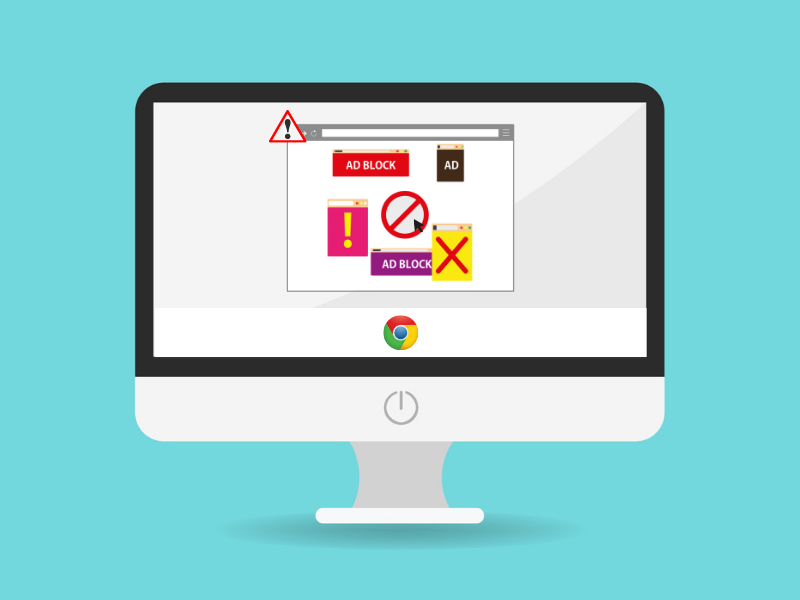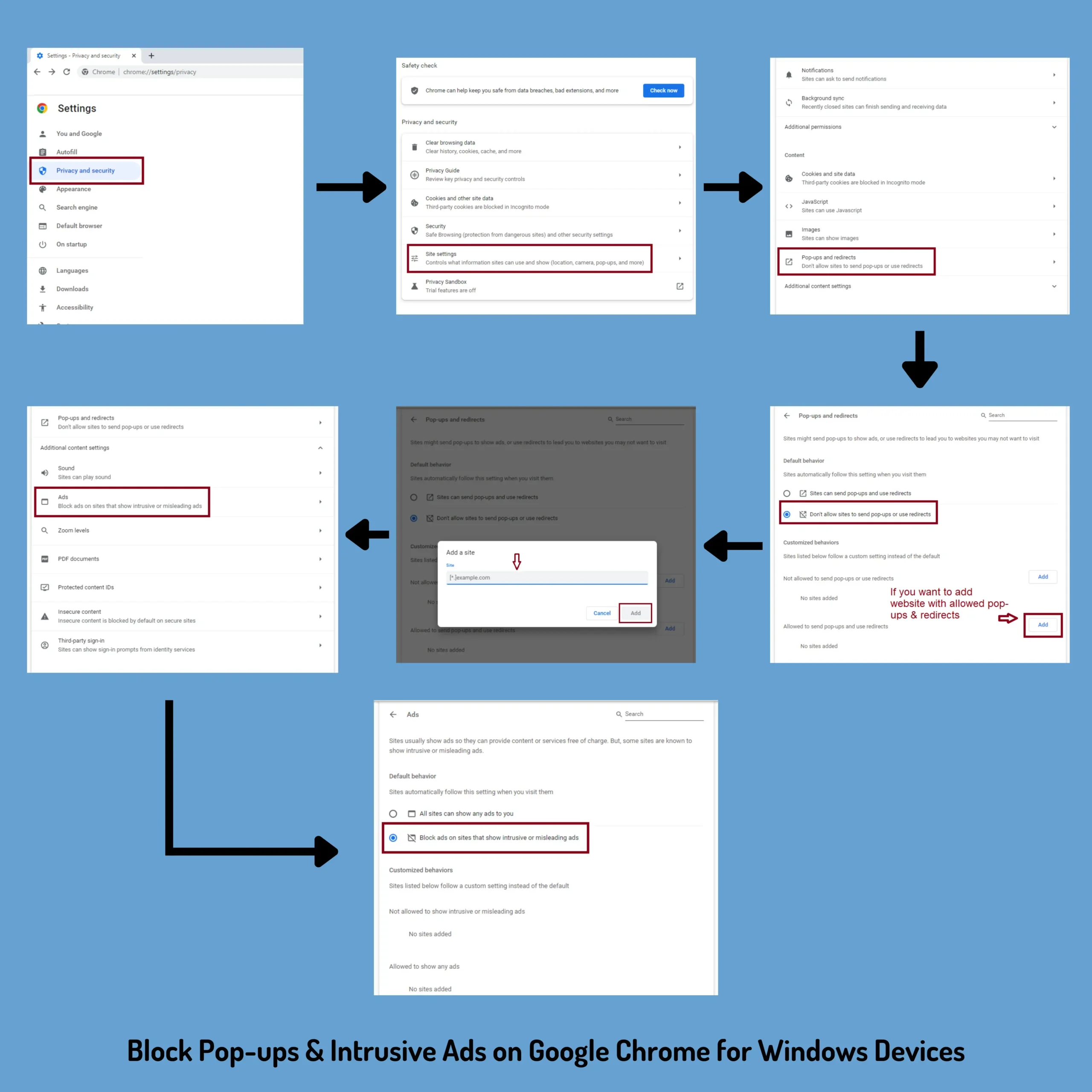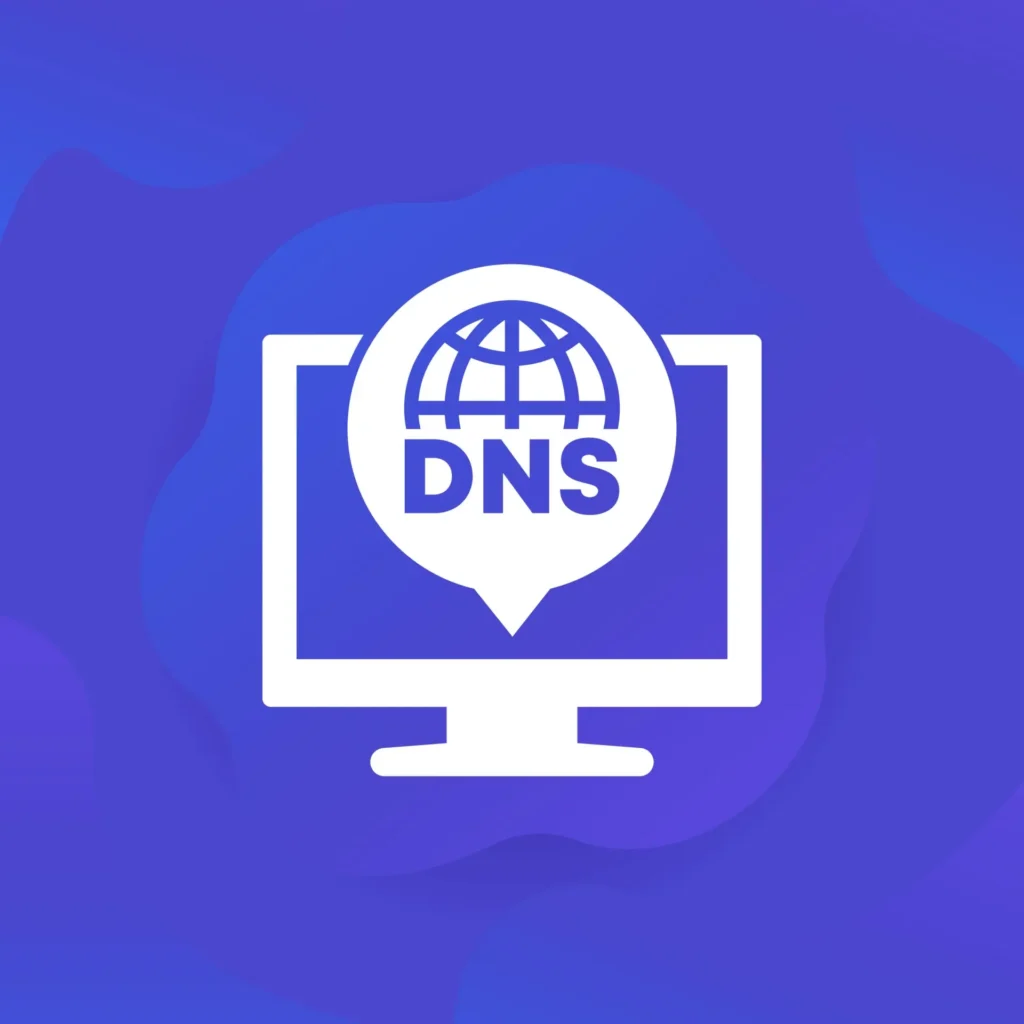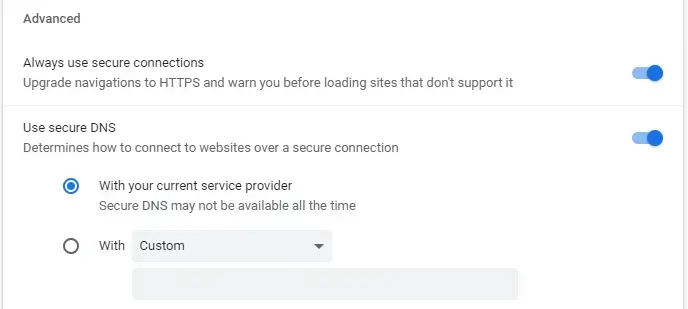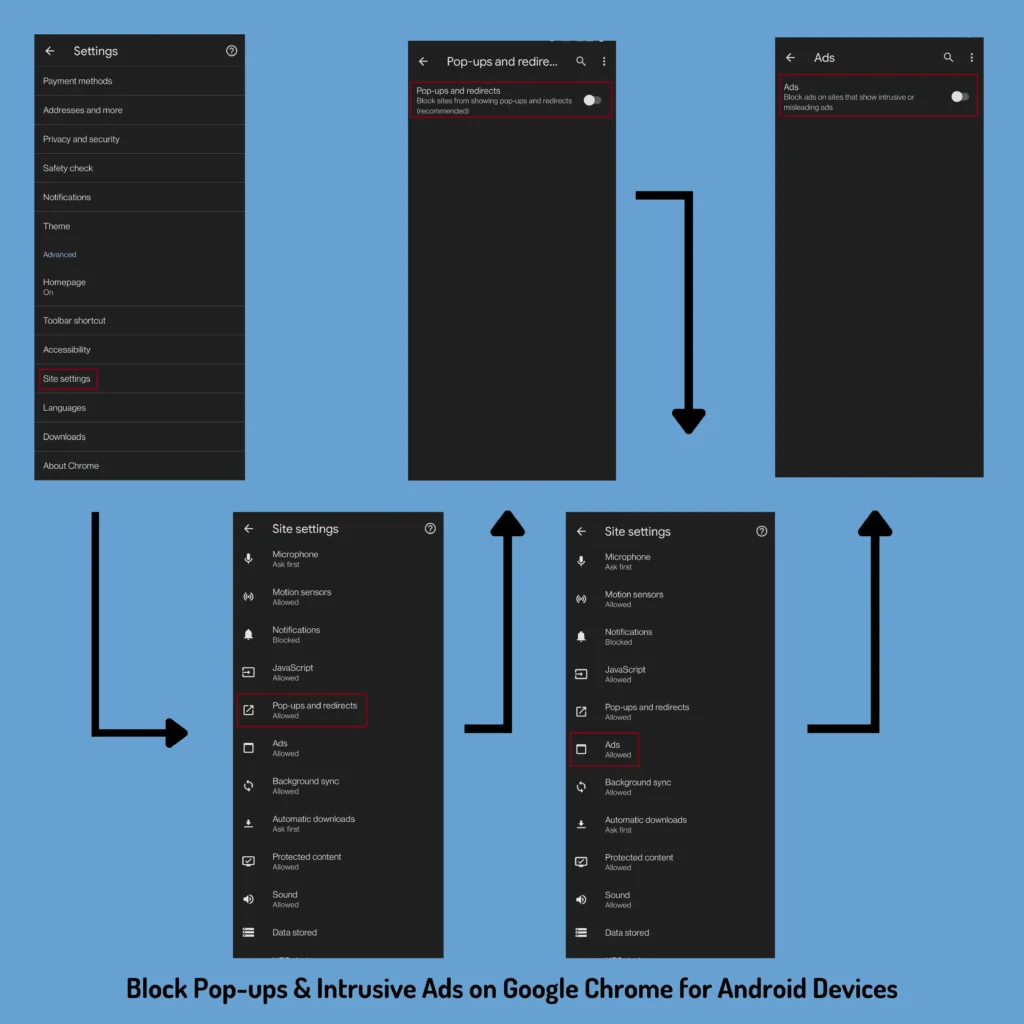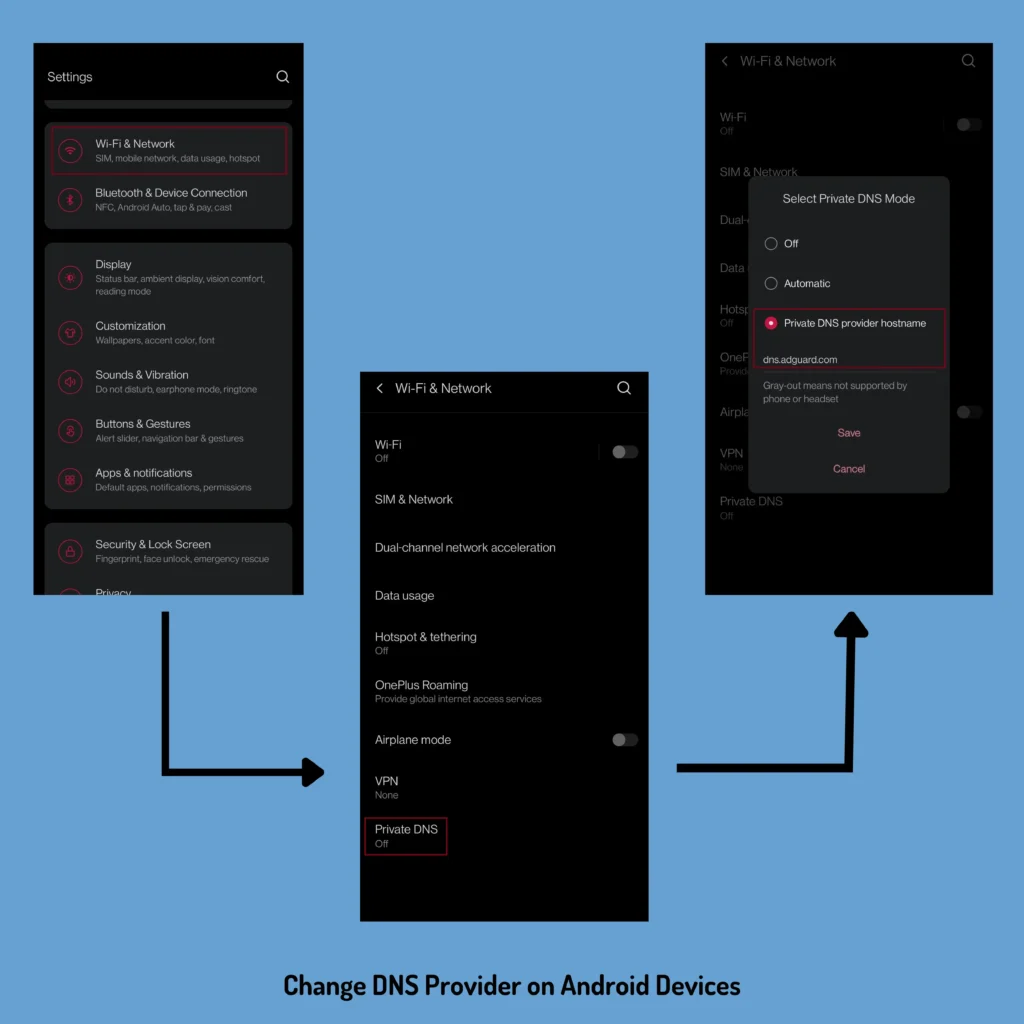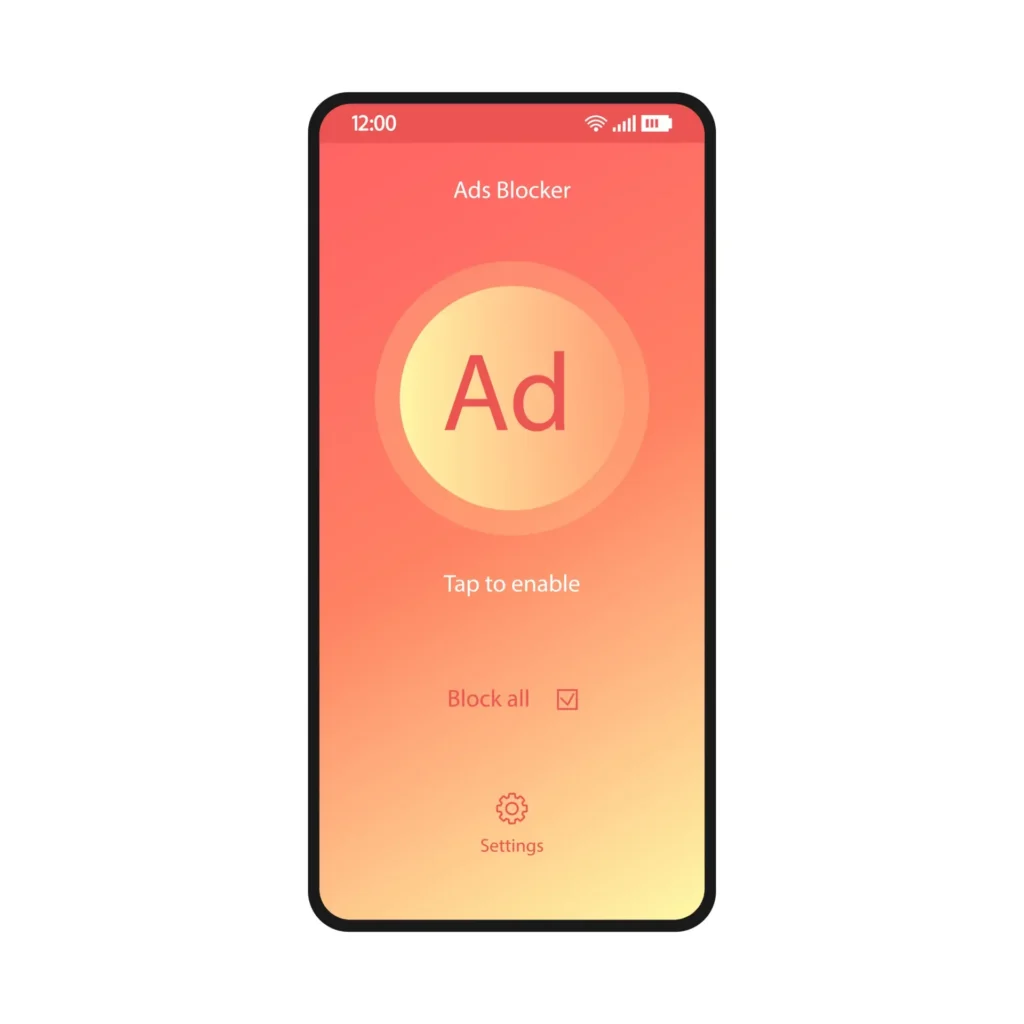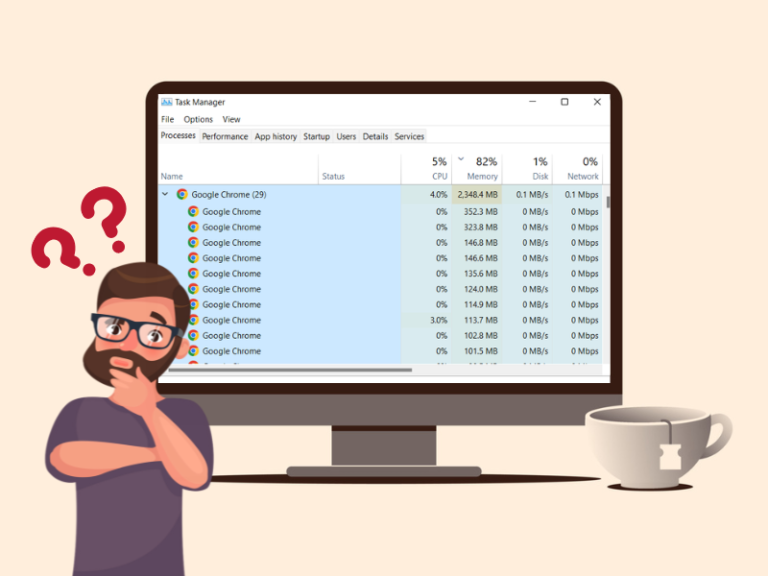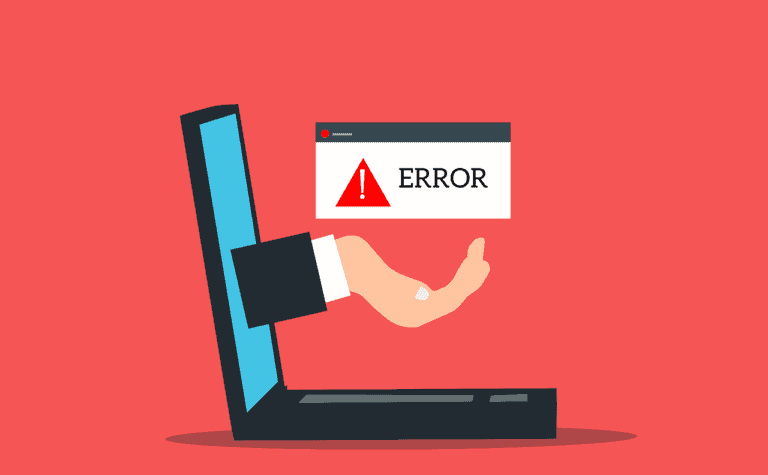There is no doubt that website ads can negatively impact your browsing experience. Some of these ads can be intrusive as well. So being a Google Chrome user you might want to have a clean web experience by blocking these ads. After trying and testing Tech for folks Team have come up with some easy methods to block ads on Google Chrome browser for both Windows & Android Devices.
Do keep in mind that there is no way to remove Ads from any website. Because ads are nothing but a piece of code that is integrated to the websites by the developers. So, without having the backend access of the websites you can not remove those codes. However, you can easily instruct any browser including Google Chrome to block those specific codes during the rendering process.
So our entire guide will be focusing on blocking these ads rather than removing them. This guide won’t help you to remove ads from YouTube or Facebook sponsored ads. Those types of ads work differently. This guide is entirely made to block ads that are displayed or popped up when we browse different websites.
Block Display & Popup Ads from Google Chrome for Windows
You can easily block most of the website’s ads by tweaking some Chrome settings or by adding some Chrome extensions. In addition, Windows operating system has its native settings to change the DNS provider, by changing, it can also help you to remove most website ads for any installed browsers.
1. Enable Google Chrome’s in-built Ad Blocking Settings
Google has inbuilt settings to block pop-ups and redirects also able to block intrusive ads. However this won’t block all the ads. But you can consider this as your first step towards blocking display and pop-up ads for Chrome browser.
- Open Google Chrome and navigate to Three Dots > Privacy and security > Site settings.
- Scroll down and you will find “Pop-ups and redirects”.
- Click on it and toggle on “Don’t allow sites to send pop-ups or use redirects”.
- This will block all the pop-ups including the pop-up ads and also the redirects. However if you trust some websites you may also list them as allowed under the “Customized behaviors” section.
- Now again navigate to Three Dots > Privacy and security > Site settings.
- Scroll down and expand the dropdown list under “Additional content settings”.
- Go to “Ads” and toggle on “Block ads on sites that show intrusive or misleading ads”.
2. Use Ad-blocking Extensions
Ad-blocking extensions are the key to block most of the ads on Google Chrome. These extensions are tailor made for blocking display and pop-up ads. You will find so many ad-blocking extensions in the Chrome Web Store. But we recommend not adding any random ad-blocking extensions, because adding unnecessary and unoptimized extensions might slow down Google Chrome. After testing we have already shortlisted the best ad-blockers available on the internet. To get the list you may check out our blog “7 Best Ad Blockers for 2023”.
After selecting an Ad Blocker, you need to add it to the Chrome Browser. For that go to Chrome Web Store and search the extension by typing its name in the search bar. On the search result click on the extension name and then click on “Add to Chrome”.
Extension will ask for some permissions. Provide the required permissions and done. Now try to load any website to see the difference.
3. Change DNS Provider
When we try to visit any websites, the URL always asks the existing DNS provider to provide the IP address for the website. That’s how the internet works. If you haven’t changed the DNS manually most probably currently you are on the DNS server provided by your ISP.
But you can easily change it from the windows settings to AdGuard’s Free Public DNS. Now basically what will happen is all the URLs you will try to visit will ask the IP addresses from the AdGuard. ADGuard’s DNS will block any website code that is related to the advertisements. This can provide a clean Ad free web experience not only for Google Chrome users but for all the installed browsers.
To set up AdGuard’s free public DNS to your Windows devices you can visit their official article for step by step instructions. In this method it has been observed that for some websites the Ads completely gets blocked but the Ad’s container sometimes shows up in a grey box.
Please keep in mind that there is a Chrome’s in-built setting that helps you to change to some custom DNS Provider. By default it will be set to “With your current service provider”. However if you have manually changed it earlier then you need to revert it back to the “With your current service provider” status before configuring AdGuard’s Public DNS. Otherwise two separate DNS providers can conflict with each other and won’t provide required results for the users.
To revert it back Open Google Chrome and in the address bar type “chrome://settings/security”. Scroll down and under Secure DNS toggle for “With your current service provider”.
Now that we have already discussed all the probable methods for blocking display and pop-up ads on Google Chrome for Windows devices, let’s discuss the methods for the Android devices.
Block Display & Popup Ads from Google Chrome for Android
Unlike Google Chrome for Windows, Google Chrome for Android does not have the support for the extensions. So to block ads on Chrome Android you need to depend on Chrome’s in-built settings, Android’s native settings or you may need to use a third party Ad-Blocking App. However the full utilization of these third party ad blockers can be hidden under a pay wall.
1. Enable Google Chrome’s in-built Ad Blocking Settings
Like Chrome Windows, Google Chrome Android also has two internal settings that can prevent showing pop-up and intrusive website ads. By activating these settings you can expect most of the pop-up Ads will be blocked, but this process won’t eliminate all the display Ads; only the intrusive display ads will be blocked.
- Open Google Chrome and go to Settings from the Three Dots.
- Scroll down and navigate to Site Settings > Pop-ups and redirects and block pop-ups and redirects by turning off the toggle button.
- Go back and now navigate to Site Settings > Ads and block intrusive ads by turning off the toggle.
2. Change DNS Provider
AdGuard’s free public DNS is also available for Android Devices as well. By following the same process discussed in the Windows section AdGuard’s DNS can block Website Ads by its DNS.
Setting up AdGuard’s Public DNS for Android is actually simpler than Windows. Open your phone’s Settings and navigate to Wi-Fi & Network > Private DNS and toggle on “Private DNS provider hostname”. Type “dns.adguard.com” (without the quotation mark) as the name of the DNS provider and tap on Save. Restart your phone and open Google Chrome to load any website to see the changes.
The name of the options can vary from device to device. So for some devices you may need to google for the process of adding private DNS with your device name. You can also watch the below YouTube Short to get an idea.
3. Use third Party Apps
As there is no extension support for Chrome Android. You can not add ad blocking extensions like uBlock Origin, AdBlock Plus etc directly from the Chrome Web Store.
You need to install Ad-Blocking Apps from Google Play Store. In some cases you may need to pay a premium to unlock the full potential for these Ad-Blocking Apps. You can check this article to get some ideas on good Ad-Blocking Android Apps.
The Conclusion
These are the most effective ways to block ads inside Google Chrome. You can apply all the methods but for Windows devices adding a good ad blocking extension can be the best and easiest solution.
For Android devices rather than installing a different app you can first try Chrome’s in-built settings and also AdGuard’s free DNS if these two methods work for you then don’t bother to install another app to block Ads. However if you really like any premium features of any Ad-Blocking App you can always pay to avail the features.

